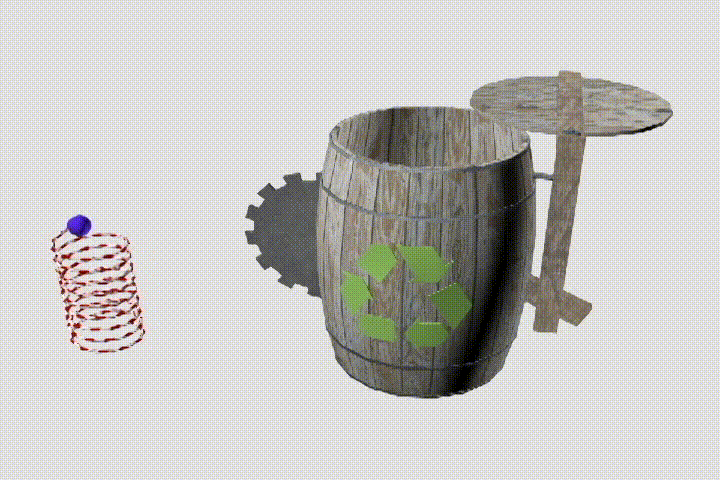 At the center of eukaryotic protein degradation is the 26S proteasome, an elegant protein machine assembled from 33 subunits. To degrade a protein target, the 26S proteasome recognizes the ubiquitin configuration on the target, engages it, progressively unfolds and translocates the target molecule into the central chamber for proteolysis.
At the center of eukaryotic protein degradation is the 26S proteasome, an elegant protein machine assembled from 33 subunits. To degrade a protein target, the 26S proteasome recognizes the ubiquitin configuration on the target, engages it, progressively unfolds and translocates the target molecule into the central chamber for proteolysis.
To understand how the proteasome machine operates, we have been involved in several studies aiming at acquiring structural information of the proteasome using cryo-electron microscopy. So far, we have identified 11 conformations of the human 26S proteasome, under a variety of conditions, either in the presence or absence of substrate, in publications reporting the first high-resolution structure of the human 26S proteasome, the first structure of free 19S proteasome and the structures of substrate-engaged proteasomes.
Related publications:
- Shuobing Chen*, Jiayi Wu*, Ying Lu*, Yong-Bei Ma, Byung-hoon Lee, Zhou Yu, Qi Ouyang, Daniel J. Finley, Marc W. Kirschner, and Youdong Mao (2016). Structural Basis for Dynamic Regulation of The Human 26S Proteasome. PNAS Nov. 15; 113(46): 12991-12996. *equal contribution
- Ying Lu*, Jiayi Wu*, Shuangwu Sun, Yong-Bei Ma, Qi Ouyang, Daniel Finley, Marc W. Kirschner, Youdong Mao (2017). Conformational Landscape of the p28-bound Human Proteasome Regulatory Particle. Molecular Cell Jun 26; S1097-2765(17). *equal contribution
- Yanan Zhu, Wei Li Wang, Daqi Yu, Qi Ouyang, Ying Lu*, Youdong Mao* (2018). Structural mechanism for nucleotide-driven remodeling of the AAA-ATPase unfoldase in the activated human 26S proteasome. Nature Communication Apr 10;9(1):1360. * Co-corresponding author
- Yuanchen Dong, Shuwen Zhang, Zhaolong Wu, Xuemei Li, Weili Wang, Yanan Zhu, Svetla Stoilova-McPhie, Ying Lu*, Daniel Finley, Youdong Mao (2019). Cryo-EM structures and dynamics of substrate-engaged human 26S proteasome. Nature. 565(7737):49-55.
To understand how the proteasome and other protein machines work requires knowledge in their dynamical behaviors, which is a main research focus in the post-structure era. So far, no effective approach is available to directly probe their structural dynamics. Computer simulation using conventional methods in a biologically-relevant time scale is still impractical (longer than 1000 years for the proteasome!).
In a ground-breaking study, we developed a novel approach to enable the simulation of proteasome’s structural dynamics, using its energy landscape that was determined empirically. We find that predictions of the simulation are widely consistent with experimental observations in this and previous studies. This consistency validates our approach. This energy-landscape-based simulation rationalizes previous results that appear contradictory and provides mechanistic explanation for, particularly, how different subunits on the proteasome coordinate in degrading a protein target. We find that the proteasome has a unique stable, or energy-minimum, conformation regardless of its chemical status. This feature allows unambiguous collective conformational changes of proteasome’s subunits upon stimulation by chemical energy.
Related publication: